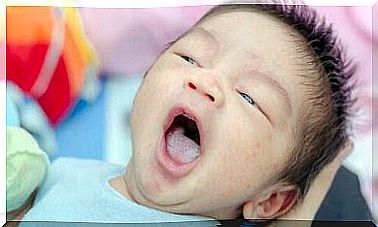All About Decroly’s Theory Of Centers Of Interest

Ovide Decroly was an educator, psychologist and physician born in 1871 in the city of Ronse , Belgium. Decroly’s theory of centers of interest was part of his pedagogy. These centers arose from the need for education that values children’s interests and is planned according to their needs.
Decrolys pedagogy
Decroly’s didactic pedagogy arose in the midst of a new educational movement that began in the 19th century and brought with it a series of principles that renewed and modernized traditional teaching methods.
Decroly’s educational strategy was based on respect for children and their personalities. This is in line with several of the basic principles of the reform movements that were going on. Decroly argued that the purpose of education is to prepare children to live a free life.
Decroly suggested the need for scientific substantiation in education. Therefore, he based his disciplines on childhood and society, as well as psychology and biology. These helped him develop his special methodology based on what he called centers of interest for children.

What is Decroly’s theory of centers of interest?
Decroly believed that these centers were the major engine behind the teaching. In addition, he advocated that one should use them to satisfy the special needs one has during childhood.
In other words, in teaching it is important to know what needs children have, as well as their interests. This allows you to attract their attention and cultivate a desire for knowledge and learning.
According to Decroly, children have four basic natural needs, which these centers of interest should meet.
Decrolys interest centers:
- Nutrition
- Protection against cold and harsh weather
- Defense against danger and enemies
- Recreation, self-improvement and opportunities to interact and collaborate with others in a spirit of solidarity.
Although he suggested these as the most important principles, he also mentioned light, rest and mutual support as important aspects.
Decroly’s theory of centers of interest is part of what he calls the “principle of globalization.” This principle is a pedagogical procedure that should also be present when students learn to read and write.
Consequently, Decroly based its globalization principle on the idea that children perceive reality as a global whole. Therefore, it is important to know which parts of reality capture their attention and what stimulates their learning. It also means looking at the knowledge they already possess.
Therefore, there must be interest in implementing this globalization. However, there is no interest if there is no need. With this in mind, stimulation in the environment is of utmost importance for children. They then achieve meaningful learning that contributes to their physical, psychological and social development.
Decrolys triad
First of all, Decroly suggested that the classes should be relatively homogeneous for his centers to function optimally. In other words, children in the same class should have the same pace of learning and the same age and level of development. Second , the classes should not consist of more than 30 students.

In addition, learning centers should follow different phases or be organized around three types of exercises. These phases – called the Decrolys triad – are as follows:
- Observation. This is important to arouse children’s interest by letting them make their own observations. These sensory experiences are also the key to putting children in touch with objects, other beings and events. It is a starting point for intellectual activities that are based on knowledge of the world around them.
- Associations. This brings together and coordinates ideas. Children should learn to relate space and time dimensions, as cause and effect. In addition, they learn to make comparisons, classifications and determine similarities and differences.
- Expression. Children must be able to express themselves in order to be able to communicate and convey their knowledge – what they have learned. This refers to two different types of expressions: concrete expressions and abstract expressions. The first is about doing things with your own hands, such as drawing, painting and even playing music. The second involves translating thoughts using symbols and codes (letters, numbers, etc.).
The importance of Decroly’s theory of centers of interest for modern education
Organizing learning according to the children’s interests is very important. In addition, these interests are products of children’s needs.
It is important that educators take into account the children’s prior knowledge and experiences. These are all Decroly’s contributions to modern education.
Interest centers focus on teaching themes that are attractive to students and that cover their basic needs. For example, rest, distraction or needs related to their surroundings, such as family and environment.
They consist of work units that formulate all the learning that a child must achieve around an operational core, in a holistic way – without having to divide the content into subjects or courses.
In addition, these centers place personalities, individualities, temperaments, knowledge and contact with one’s environment in the foreground. Taking all these into account is important to make teaching more efficient.









